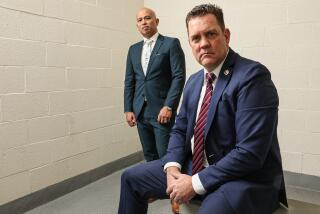Ray Bradbury’s house, sold for $1.76 million, is being torn down
Ray Bradbury lived in his 1937 Cheviot Hills home for more than 50 years. After the author of “Fahrenheit 451” died in 2012, the house was readied for sale.
The home was filled with original details, such as built-in bookcases, that surrounded Bradbury for much of his life. The next owner could be proud to live with the echo of Bradbury, the beloved science fiction writer who advised both Walt Disney and NASA.
Or not.
The home, which was purchased in June for $1.765 million, is being demolished. A permit for demolition was issued Dec. 30, Curbed LA reports, and a fan who visited the house over the weekend found it in the process of being torn down.
At the request of friends who’d heard the home was being destroyed, John King Tarpinian paid it a visit. “In only one day half of the house was gone,” he writes at the science fiction site File 770.com.
Tarpinian took photos of the shattered roof, half-demolished walls and former patio where a knocked-out door frames emptiness behind. “As I was taking pictures locals were walking their dogs. They’d stop to observe and we’d converse,” Tarpinian writes. “One lady had no idea who had owned the house; she was new to the neighborhood. She walked away in tears. Another long time neighbor knew it was Ray’s home and we mutually agreed things like this are just wrong but money wins out. Another young couple had no idea who Ray was ... the saddest encounter of all.”
According to Curbed, Bradbury’s house was purchased by “starchitect” Thom Mayne, of the firm Morphosis, and his wife, Blythe Alison-Mayne.
Mayne, who is on the faculty at UCLA, is a winner of the Pritzker Prize. Bradbury, who typed “Fahrenheit 451” on a pay-as-you-go typewriter at the UCLA library, was presented with the National Medal of Arts in 2004.
Materials from Bradbury’s office, including file cabinets, papers and many of the author’s books, have been donated to The Center for Ray Bradbury Studies in Indiana, which is seeking donations to re-create the author’s home office as it appeared in the mid-1960s, “when he was at the height of his power as a creative writer and cultural visionary.”
Book news and more; I’m @paperhaus on Twitter
More to Read
Sign up for our Book Club newsletter
Get the latest news, events and more from the Los Angeles Times Book Club, and help us get L.A. reading and talking.
You may occasionally receive promotional content from the Los Angeles Times.







